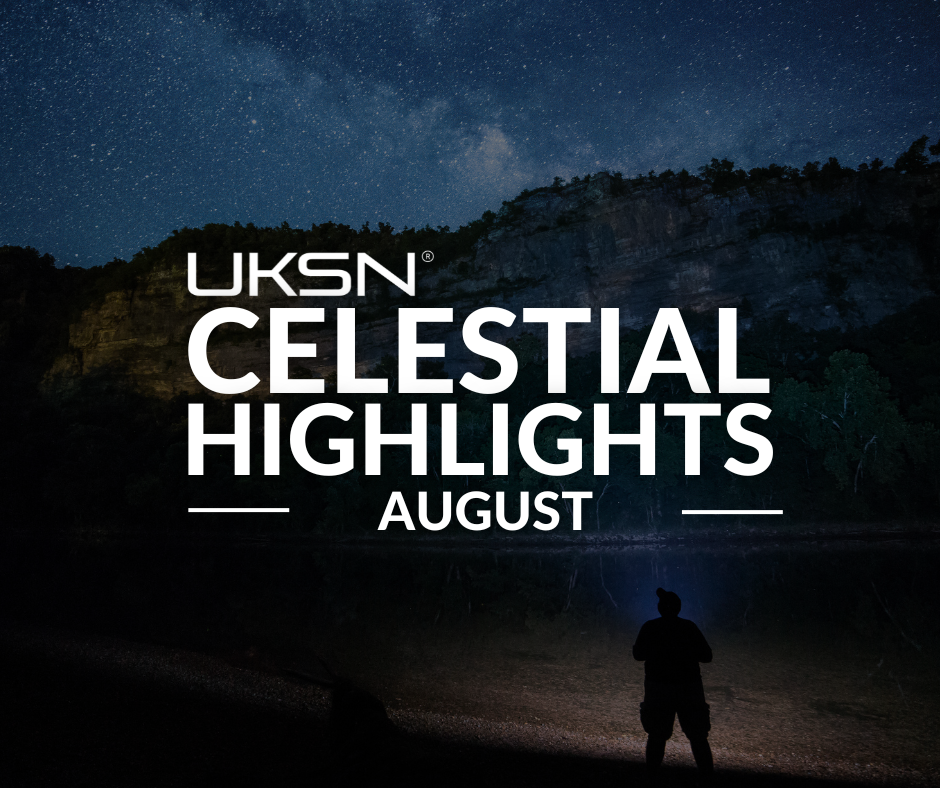August Stargazing: Top Celestial Highlights
- UKSN

- Aug 8
- 3 min read
Updated: Nov 21
August is one of the most exciting months in the stargazing calendar. Warm nights, darker skies returning, and the famous Perseid Meteor Shower all come together to make this a perfect time to get outside and look up. Pack a blanket, grab a flask, and gather family or friends - this is a month for magical nights under shooting stars!

The Perseid Meteor Shower
The headline event of August is the spectacular Perseid Meteor Shower, peaking overnight on 12–13 August. The Perseids are one of the brightest and most reliable meteor showers of the year, producing up to 80–100 meteors per hour at their peak under dark skies.
How to See Them:
Best viewed after midnight, into the early hours.
Look towards the northeast, near the constellation Perseus, but meteors can appear anywhere overhead.
The waxing crescent moon will set early this year, giving lovely dark skies for peak viewing - perfect conditions!
Bring a blanket or recliner and give your eyes at least 20 minutes to adjust.
The Sturgeon Moon
August’s full moon - known as the Sturgeon Moon, reaches its peak on August 19. The name comes from Native American tribes who found sturgeon easiest to catch during this month.
The moon will rise big and bright in the southeast at sunset, offering a fantastic chance for moonlit walks or striking landscape photos with the glowing full moon as your backdrop.
Planets on Show
August continues the trend of excellent early-morning planets:
Saturn is at its best this month, reaching opposition on August 24, it’s visible all night and brightest for the year. Spot its golden glow rising in the southeast after dusk.
Jupiter rises before midnight by late August, growing more prominent each week.
Mars is still low in the morning sky but becoming harder to see.
Venus starts shining brightly again just before sunrise by mid-to-late August - look low in the east.
The Milky Way at Its Best
August is one of the best months to see the Milky Way in the UK. Head to a dark-sky spot, face south after 11pm, and you’ll see the glowing arc stretch across the sky. The galactic core near Sagittarius and Scorpius is especially stunning this time of year.
Binoculars make a huge difference - sweep along the Milky Way to discover star clusters, nebulae, and dense star fields.

August Stargazing Challenge: Spot the Andromeda Galaxy (M31)!
August is when Andromeda Galaxy, our closest large galactic neighbour, becomes visible again in the late evening.
How to Find It:
Face northeast after 11pm.
Find the constellation Cassiopeia (the big W shape).
Andromeda lies about halfway between Cassiopeia and the square of Pegasus.
With dark skies, you may see it as a faint smudge with the naked eye - binoculars or a small telescope reveal more detail.
Bonus Challenge: Make a Meteor Photo!
If you have a DSLR or smartphone with night mode, try capturing a Perseid! Use a tripod, point your camera at a dark patch of sky, and take long exposures - you might catch a meteor streaking past the stars.
Final Thought
August is a stargazer’s dream. With the Perseids peaking, planets shining bright, and the Milky Way in full swing, there’s every reason to step outside, slow down, and take in the wonders above.
Wishing you clear skies and unforgettable nights!

.png)







Comments